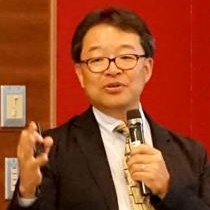Environmental Mineralogy, 2nd Edition
A special issue of Minerals (ISSN 2075-163X). This special issue belongs to the section "Environmental Mineralogy and Biogeochemistry".
Deadline for manuscript submissions: closed (16 February 2024) | Viewed by 12706
Special Issue Editors
Interests: environmental mineralogy; radioactive waste disposal; natural analogue; natural attenuation; geochemical modeling
Special Issues, Collections and Topics in MDPI journals
Interests: underground transport phenomena; water-solid surface interaction; kinetics; radioactive waste disposal; safety assessment
Special Issue Information
Dear Colleagues,
“Environmental mineralogy” has developed over the past decade in response to the recognition that minerals are unambiguously linked in many important ways. This includes, of course, the local and global ecosystem, but also areas of geo-engineering technology, such as mining and waste disposal. Addressing a broad spectrum of issues encountered in geo-engineering will require an accurate and detailed understanding of the nature and extent of mineral–water interactions at the interface between built and natural environments. Such issues include the disposal of hazardous and radioactive waste, treatment of acid mine drainage and wastewater, capture and storage of carbon dioxide, construction using cement, slag, and fly ash, and the health effect of minerals, such as asbestos. Safety and performance assessments in such cases require the results of cutting-edge scientific research in many areas: (1) the kinetics of dissolution, alteration, and formation of minerals; (2) pollutant uptake by and release from minerals; (3) geochemical buffering of acid–base and redox reactions by minerals; and (4) mineral–microbe interactions. In this Special Issue, we seek to assemble a balanced combination of field, laboratory, and computational studies that represent recent advances and the future challenges in this field.
Prof. Dr. Tsutomu Sato
Prof. Dr. Yuichi Niibori
Guest Editors
Manuscript Submission Information
Manuscripts should be submitted online at www.mdpi.com by registering and logging in to this website. Once you are registered, click here to go to the submission form. Manuscripts can be submitted until the deadline. All submissions that pass pre-check are peer-reviewed. Accepted papers will be published continuously in the journal (as soon as accepted) and will be listed together on the special issue website. Research articles, review articles as well as short communications are invited. For planned papers, a title and short abstract (about 250 words) can be sent to the Editorial Office for assessment.
Submitted manuscripts should not have been published previously, nor be under consideration for publication elsewhere (except conference proceedings papers). All manuscripts are thoroughly refereed through a single-blind peer-review process. A guide for authors and other relevant information for submission of manuscripts is available on the Instructions for Authors page. Minerals is an international peer-reviewed open access monthly journal published by MDPI.
Please visit the Instructions for Authors page before submitting a manuscript. The Article Processing Charge (APC) for publication in this open access journal is 2400 CHF (Swiss Francs). Submitted papers should be well formatted and use good English. Authors may use MDPI's English editing service prior to publication or during author revisions.
Keywords
- acid mine drainage
- asbestos
- carbon sequestration and mineralization
- cement
- enhanced rock weathering
- fly ash
- mining
- slag
- radioactive waste
- waste disposal
- water treatment
Benefits of Publishing in a Special Issue
- Ease of navigation: Grouping papers by topic helps scholars navigate broad scope journals more efficiently.
- Greater discoverability: Special Issues support the reach and impact of scientific research. Articles in Special Issues are more discoverable and cited more frequently.
- Expansion of research network: Special Issues facilitate connections among authors, fostering scientific collaborations.
- External promotion: Articles in Special Issues are often promoted through the journal's social media, increasing their visibility.
- Reprint: MDPI Books provides the opportunity to republish successful Special Issues in book format, both online and in print.
Further information on MDPI's Special Issue policies can be found here.
Related Special Issue
- Environmental Mineralogy in Minerals (10 articles)






